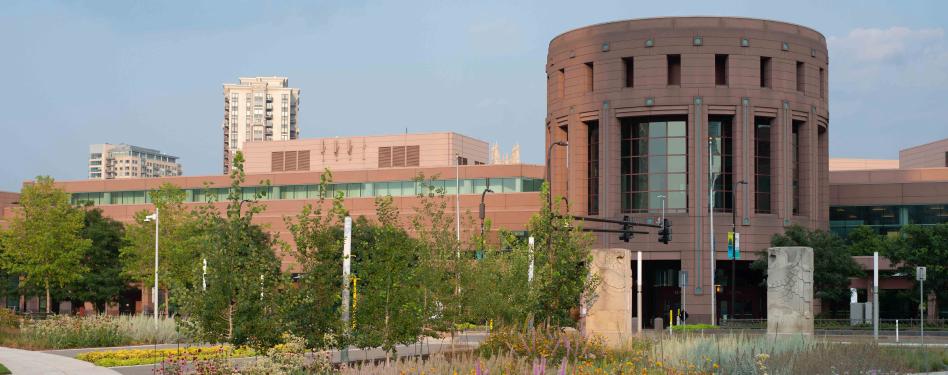
Feature image: The SITES Silver Minneapolis Convention Center Plaza in Minneapolis, Minnesota. Photo credit: Damon Farber Architects.
According to the U.N. Environment Programme (UNEP), nature-based solutions can influence 79% of all targets across the U.N. Sustainable Development Goals (SDGs), which were created as a global effort to address the social, economic and environmental issues facing society today. SITES calls for nature-based solutions and recognizes the inextricable links between human health, the health of the environment and the economy.
U.N. Sustainable Development Goals
There are 17 SDGs dictated by the 2030 Agenda for Sustainable Development, and they form a call to action for countries and institutions to commit to and work together toward a more just and flourishing world. The 17 goals are populated by 169 specific targets that cover social, economic and environmental issues ranging from biodiversity to education access.
There are many synergies between SITES and the U.N. SDGs, which are broken out in the graph below. A resource titled "Advancing the United Nations Sustainable Development Goals through SITES" highlights these synergies while demonstrating the impact of SITES in a global context. This publication is intended to be used as a tool to identify and target both general and technical strategies to achieve specific U.N. SDGs on land design and development projects through SITES certification. It is also a helpful depiction of how the SITES rating system is aligned with global efforts to create a more resilient, equitable and healthy world for all.

SITES certification requirements can help achieve U.N. SDGs.
As seen in the graph above, many credits in the SITES rating system directly address the 17 U.N. SDGs. The SITES rating system scorecard is broken into 67 credits and prerequisites (indicated in the scorecard as “C” and “P,” respectively) that correspond to 10 content sections. These sections are indicated in the "Advancing the United Nations Sustainable Development Goals through SITES" document under headers labeled “SITES Specific Credits.”
How SITES factors in
The five U.N. SDGs that the SITES rating system addresses most consistently include Sustainable Cities and Communities; Good Health and Well-being; Life on Land; Industry, Innovation and Infrastructure; and Clean Water and Sanitation:
- 67% of SITES credits address Goal 11: Sustainable Cities and Communities, which seeks to make cities and human settlements inclusive, safe, resilient and sustainable.
- 46% of SITES credits address Goal 3: Good Health and Well-being, which seeks to ensure healthy lives and promote well-being for all at all ages.
- 45% of SITES credits address Goal 15: Life on Land, which seeks to protect, restore and promote the sustainable use of terrestrial ecosystems, sustainably manage forests, combat desertification and halt and reverse land degradation and halt biodiversity loss.
- 37% of SITES credits address Goal 9: Industry, Innovation and Infrastructure, which seeks to build resilient infrastructure, promote inclusive and sustainable industrialization, and foster innovation.
- 36% of SITES credits address Goal 6: Clean Water and Sanitation, which seeks to ensure the availability and sustainable management of water and sanitation for all.
Learn more about the synchronicities between these two systems to understand how your projects can pursue the U.N. SDG goals most effectively.
